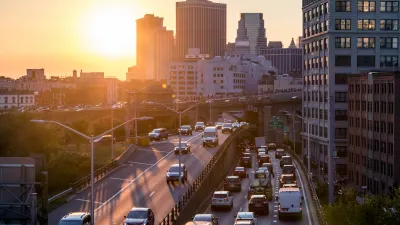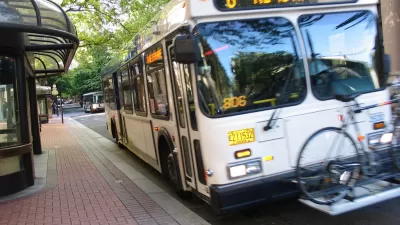Many public transit agencies face financial stress due to rising costs, declining fare revenue, and declining subsidies. Transit advocates must provide a strong business case for increasing public transit funding.

Public transit plays unique and important roles in am efficient and equitable transportation system: it provides basic mobility for non-drivers, resource-efficient travel on busy urban corridors, and is a catalyst for more efficient urban development.
Most people are familiar with some of these roles and benefits, and so support public transit. As a result, most jurisdictions subsidize public transit, as summarized in the following table.
2021 Transit Revenues and Expenditures (APTA Transit Fact Book)
|
|
Total Expenditures |
Fares |
Subsidies |
|
Total (Billions) |
$75 |
$6 |
$69 |
|
Per Capita |
$229 |
$18 |
$211 |
Currently, U.S. public transit subsidies average more than $200 annually per capita.
These subsidies may seem large but are actually small compared with what governments spend on roads, businesses spend to subsidize employee and customer parking, and motorists spend to own and operate their vehicles. Since it serves non-drivers, public transit often substitute for expensive taxi trips. As a result, transit subsidies can provide a large return on investment if they allow governments, businesses, and households to reduce these costs.
Public transit is a terrific product; it benefits virtually everybody, including people who don't currently use it but gain from reduced traffic and parking congestion, increased traffic safety and reduced chauffeuring burdens. However, I think transit advocates can do a better job communicating these benefits, particularly now that many transit agencies face financial stress due to rising costs, declining fare revenue, and declining subsidies.
Below are eight specific reasons that communities should support and subsidize high-quality public transit.
1. For fairness’ sake
Automobile travel is highly subsidized. Every time somebody buys a car, they expect governments to provide roads and businesses to provide off-street parking for their use. These facilities are costly. For example, In 2021, U.S. local, state and federal governments spent approximately $800 per capita on public roads, half of which is funded through general taxes, plus about $200 per capita on traffic services such as policing and emergency response, and local governments require most property owners to provide off-street parking that totals thousands of dollars annually per capita. The figure below compares infrastructure costs per mode user; although a larger portion of transit costs are subsidized, motorists travel far more annual miles and so receive far larger subsidies per capita.
Transit subsidies are therefore justified for fairness’ sake, so that transit users receive their fair share of public resources and can enjoy comparable mobility benefits.
infrastructure Expenditures by Mode

Transit services tend to be least efficient – their costs per passenger-mile tend to be highest and cost recover tend to be lowest – in suburban and rural areas, and so require relatively large subsidies per transit user to ensure that suburban and rural non-drivers enjoy an adequate level of independent mobility.
2. To reduce traffic problems
Automobile travel imposes large external costs. In an economically-efficient transportation system motorists would pay directly for using roads and parking facilities, and for the congestion, risk, noise and air pollution they impose, but until that occurs, public transit subsidies can also be justified on second-best grounds, to reduce automobile infrastructure and external costs. Because traffic problems and the costs of expanding road and parking facilities increase with density, public transit subsidies can provide large savings and efficiency gains in cities. For example, in many situations it would be cheaper to improve public transit than to expand highways and parking lots, and as the least cost way to reduce traffic congestion, parking subsidy, crash and pollution problems.
3. To increase traffic safety
High quality public transit tends to provide large traffic safety benefits to all road users. Public transit has a tenth of the traffic fatality rate as automobile travel, and per capita traffic deaths tend to decline as public transit mode shares increase in a community. High quality public transit tends to reduce higher-risk driving. For example, efforts to reduce drunk driving are more successful if bar patrons have convenient alternatives to driving home. As a result, public transit improvements can be one of the most effective and cost effective ways to increase traffic safety.
Traffic Fatalities Versus Transit Ridership

4. To increase economic productivity
High quality public transit can increase productivity by giving non-drivers access to more economic opportunities such as education, jobs and commercial services, and businesses access to larger labor pools. It also supports more compact development that increases agglomeration efficiencies. As a result, per capita economic productivity tends to increase with per capita transit ridership, as illustrated below.
Economic Productivity Versus Transit Ridership for U.S. Cities

5. To increase affordability
High quality public transit is key to increasing both transportation and housing affordability. It allows households to reduce their vehicle ownership and use, which in turn can reduce residential parking which typically represent 10-20% of total housing costs. In addition, purchasing motor vehicles and fuel generate fewer regional jobs and productivity per dollar than most other consumer goods, while public transit generates many local jobs per dollar, so public transit improvements that reduce automobile and fuel expenditures tends to increase regional economic productivity, particularly in areas that import most vehicles and fuel.
As a result, the portion of household budgets devoted to transportation tends to decline as transit travel increases, as illustrated below, and by reducing household vehicle ownership can reduce residential parking costs, increasing housing affordability.
Transportation Spending Versus Transit Travel

6. For transit service efficiencies
Public transit services experience strong efficiencies of scale (sometimes called the Mohring Effect), so relatively small subsidies can provide large total benefits, including users benefits and reductions in external costs. In contrast, urban automobile travel tends to experience diseconomies of scale due to congestion so increased user fees increase overall efficiency.
7. To support more compact, efficient development
High-quality public transit can be a catalyst for creating compact and multimodal Transit-Oriented Development development, creating walkable neighborhoods and dense activity centers, and reduce sprawl-related costs. Public transit subsidies can therefore provide large long-term economic, social, and environmental benefits, and can sometimes be funded through land value capture (although care is needed to avoid excessive land taxes that could discourage optimal development density).
8. To support decongestion tolls
The quality of public transit services affects the cross-elasticity of decongestion pricing – the better the transit the smaller the fees needed to reduce traffic volumes and parking demands. For example, if transit service is inferior a $10 fee may be required to reduce traffic volumes by 20%, but if transit is convenient and attractive, a $5 fee can achieve the same reduction. As a result, motorists benefit if a portion of their road tolls and parking fees are invested to improve public transit services along their travel corridors. (Note: USDOT Secretary Sean Duffy is wrong to claim that New York City's toll is unfair to motorists because revenues are used to improve public transit: drivers benefit from higher quality transit that entices other travellers who would otherwise drive.)
My report, Evaluating Public Transit Benefits and Costs, provides detailed information on various benefits provided by public transit improvements, particularly if it increases ridership, reduces automobile travel and stimulates transit-oriented development, as summarized in the following table.
Improved Transit Service |
Increased Transit Travel |
Reduced Automobile Travel |
Transit-Oriented Development |
|
|
|
|
High quality public transit can provide diverse benefits, including many that are external, indirect and long-term. It is important to consider them all when estimating optimal funding levels and building support for public subsidies.
My report, Raise My Taxes Please: Evaluating Household Savings from High Quality Public Transit Service, indicates that high quality public transit typically requires about $268 in additional subsidies per capita but provides vehicle, parking and road cost savings averaging $1,040 per capita, plus other benefits including congestion reductions, increased traffic safety, pollution reductions, improved mobility for non-drivers, improved fitness and health. As a result, residents should rationally support tax increases if needed to create high quality public transit systems in their communities. Current planning practices tend to overlook or undervalue many of these savings and benefits and so result in underinvestment in transit improvements.
The benefits that advocates should emphasize may vary depending on location and audience. People in urban areas tend to recognize benefits from reduced traffic problems, increased equity and economic productivity. In suburban and rural areas, fairness and economic opportunity for non-drivers are particularly important. Some audiences are concerned about affordability, safety or emission reductions. My recent Planetizen blog, Progressive Planning in Ideologically Conservative Communities identifies justifications that are most likely to resonate with conservatives.
My report, Local Funding Options for Public Transportation provides ideas for new transit revenue sources. Of course, subsidies are only part of the recipe for maximizing public transit benefits. Equally important are bus lanes and other transit priority measures that increase system efficiency, compact transit-oriented development around transit stations and stops, pedestrian improvements, parking policy reforms, and TDM incentives that encourage transit ridership and revenues.

Trump Administration Could Effectively End Housing Voucher Program
Federal officials are eyeing major cuts to the Section 8 program that helps millions of low-income households pay rent.

Planetizen Federal Action Tracker
A weekly monitor of how Trump’s orders and actions are impacting planners and planning in America.

Ken Jennings Launches Transit Web Series
The Jeopardy champ wants you to ride public transit.

Rebuilding Smarter: How LA County Is Guiding Fire-Ravaged Communities Toward Resilience
Los Angeles County is leading a coordinated effort to help fire-impacted communities rebuild with resilience by providing recovery resources, promoting fire-wise design, and aligning reconstruction with broader sustainability and climate goals.

When Borders Blur: Regional Collaboration in Action
As regional challenges outgrow city boundaries, “When Borders Blur” explores how cross-jurisdictional collaboration can drive smarter, more resilient urban planning, sharing real-world lessons from thriving partnerships across North America.

Philadelphia Is Expanding its Network of Roundabouts
Roundabouts are widely shown to decrease traffic speed, reduce congestion, and improve efficiency.
Urban Design for Planners 1: Software Tools
This six-course series explores essential urban design concepts using open source software and equips planners with the tools they need to participate fully in the urban design process.
Planning for Universal Design
Learn the tools for implementing Universal Design in planning regulations.
Ada County Highway District
Clanton & Associates, Inc.
Jessamine County Fiscal Court
Institute for Housing and Urban Development Studies (IHS)
City of Grandview
Harvard GSD Executive Education
Toledo-Lucas County Plan Commissions
Salt Lake City
NYU Wagner Graduate School of Public Service






























